How to Design an Effective Invoice Notification Email Template
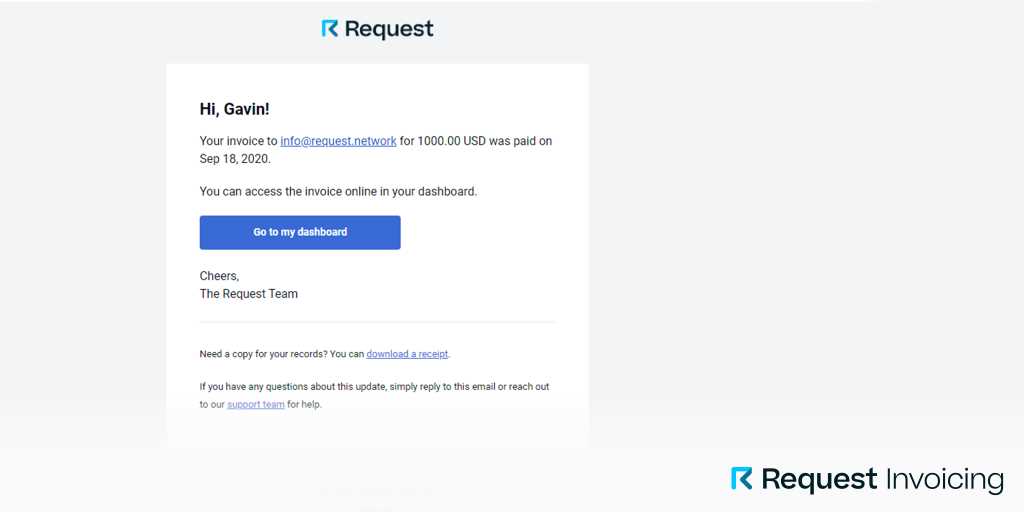
Clear and consistent communication regarding payments is essential for smooth business operations. A well-structured message to inform clients about their dues can reinforce trust, improve clarity, and even reduce delays. Crafting this correspondence with care ensures clients receive all the necessary information to proceed without confusion.
In designing a message about outstanding balances, several key elements can enhance readability and professionalism. From personalized greetings to concise details on due amounts, the approach you take can significantly impact how clients respond. Including essential details, such as payment options and deadlines, makes the process convenient and encourages prompt action.
This article offers practical tips for creating a streamlined, professional correspondence. By focusing on clarity, tone, and structure, you can make each communication more efficient and client-friendly, ultimately contributing to faster and more reliable payments.
Creating a Clear Billing Reminder Message
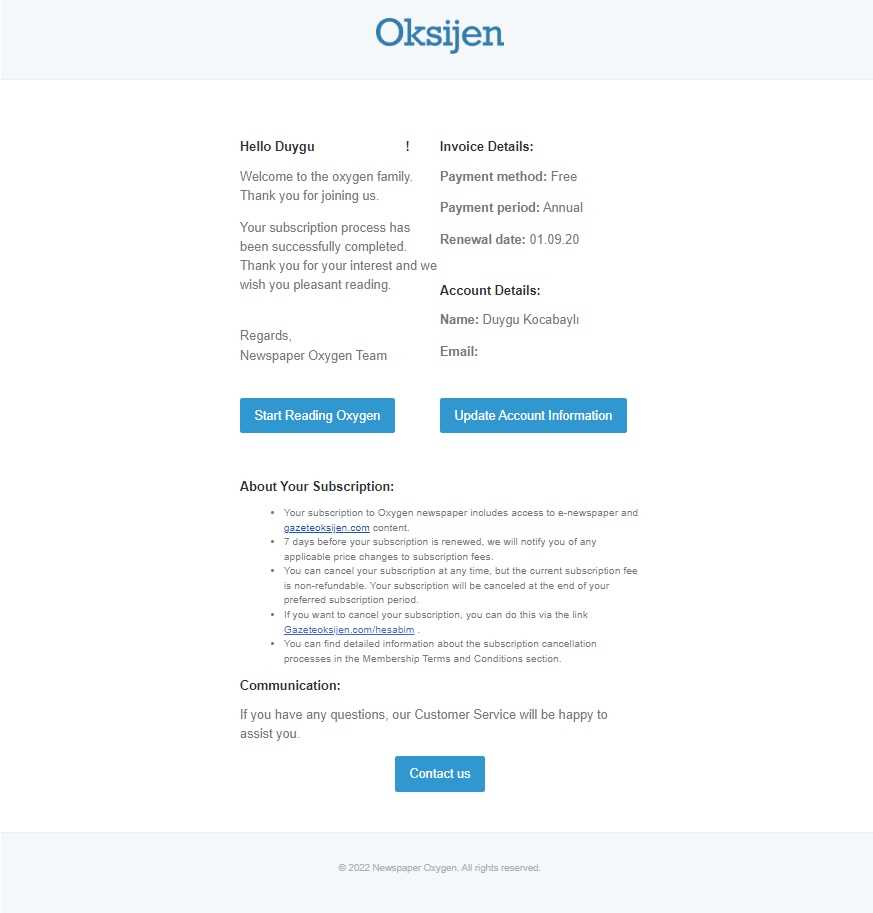
Effective communication about upcoming payments should be direct, easy to read, and informative. A well-crafted message can help clients understand their responsibilities and reduce misunderstandings, ultimately supporting timely transactions. By focusing on clarity and structure, you make it easier for recipients to comprehend the key points of your message.
Focus on Simplicity and Readability
When drafting a message regarding pending amounts, avoid lengthy paragraphs or overly complex language. Use short, direct sentences that convey only essential details. Breaking down information into bullet points or short sections improves readability and allows recipients to quickly grasp critical elements such as the total due, any deadlines, and available payment methods.
Highlight Key Information
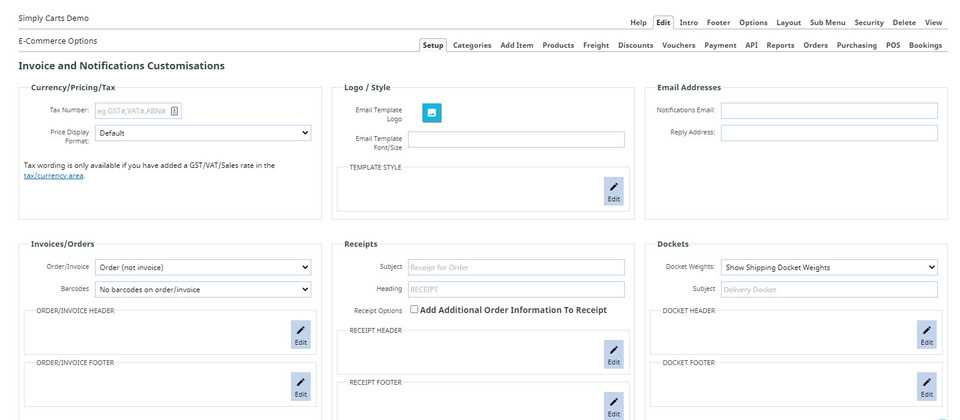
Organize the message so that crucial details stand out at a glance. Elements like the amount owed, payment link, and contact information should be prominent. Consider using bold text or a slightly larger font size for these parts to ensure they are easy to locate. Emphasizing important information helps recipi
Essential Elements of a Payment Reminder Message
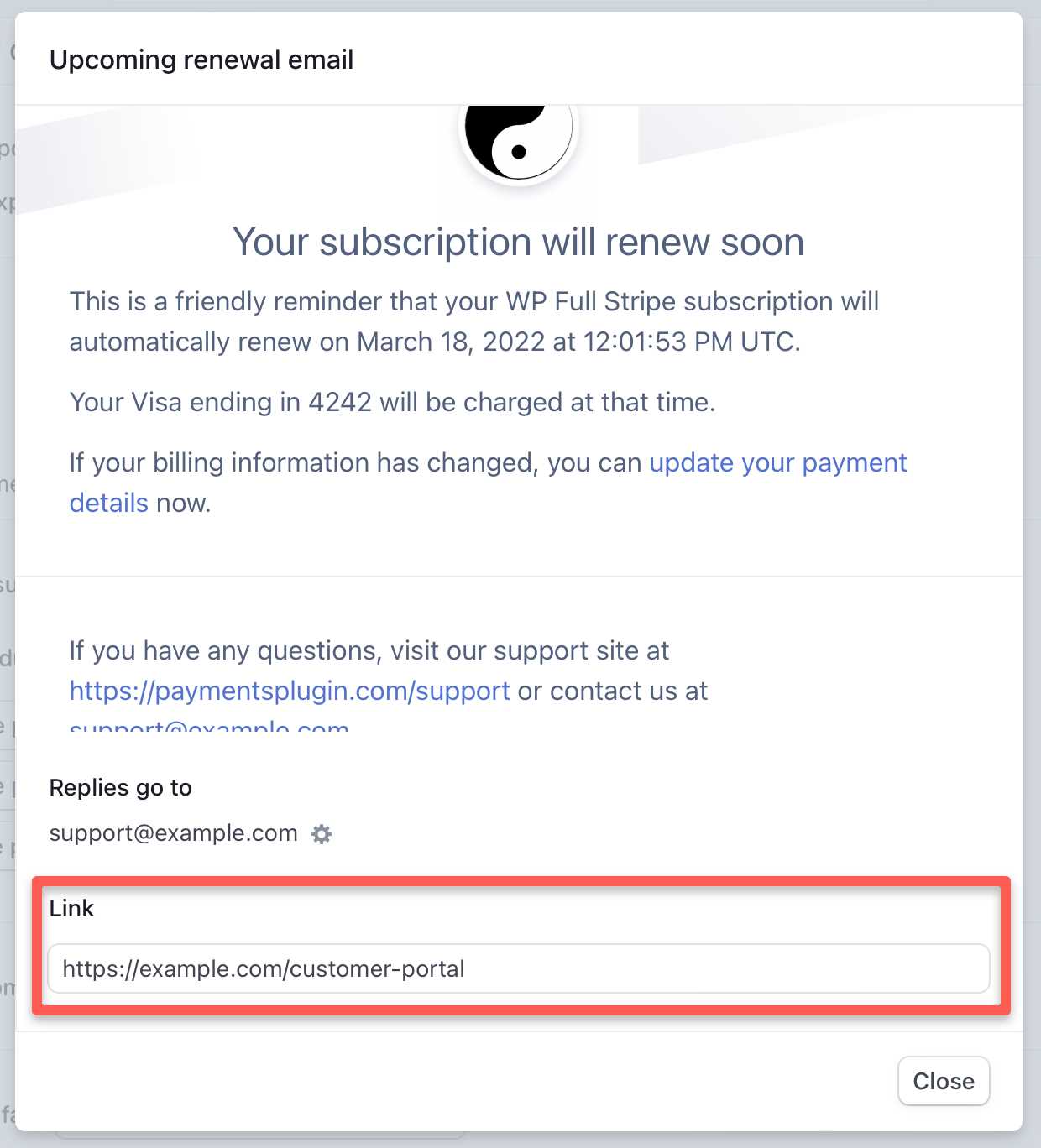
A well-structured message that reminds clients about outstanding balances should contain all the vital details needed to complete a transaction efficiently. Key components, presented in a straightforward format, help clients understand their obligations and make prompt payments without additional follow-up.
Clear Summary of Amount Due
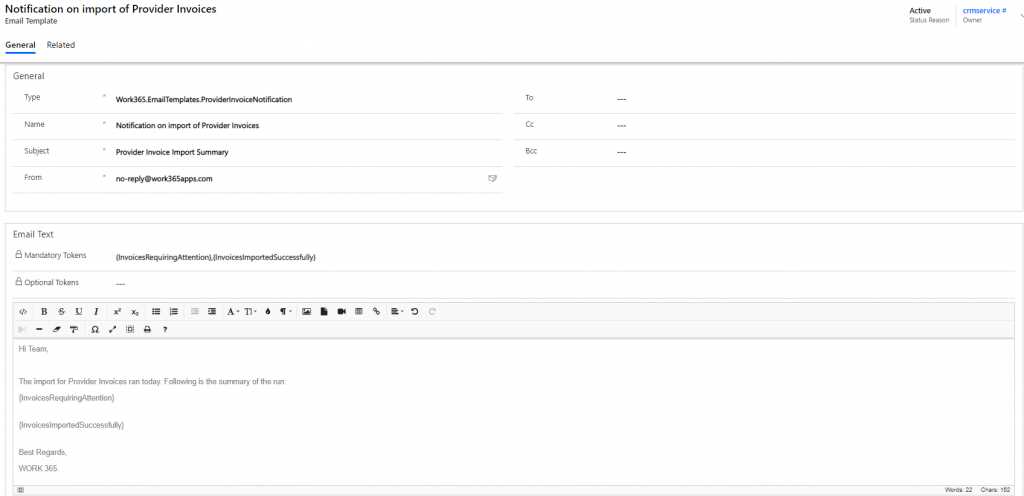
The total amount owed should be one of the most prominent details in the message. Display this information clearly and separately from other content to avoid any ambiguity. Including a breakdown of charges, if applicable, can also add transparency, giving clients a detailed view of their balance.
Defined Payment Options and Deadlines
Provide clients with a list of available payment methods, whether through bank transfer, credit card, or digital wallet. Clearly state any due dates or deadlines, and consider a gentle reminder about late fees if applicable. This clarity ensures clients have the information they need to make timely and accurate payments.
Crafting a Professional Message Design
The appearance of your payment reminder can make a significant impact on how it is perceived by clients. A well-designed message should reflect your brand’s professionalism and foster trust, making it clear and visually appealing. Consistent formatting and thoughtful design choices can contribute to a smooth, positive experience for the recipient.
- Maintain Brand Consistency: Include your company logo, colors, and fonts that match your brand identity. Consistency in design helps clients instantly recognize the sender, building familiarity and trust.
- Use Clean and Simple Layouts: Avoid cluttered designs. Structure the content with plenty of white space and clear sections so clients can quickly locate essential details without distraction.
- Optimize for Mobile Devices: Ensure the layout adjusts well on different screen sizes. Many recipients will view messages on s
Personalizing Notifications for Better Engagement
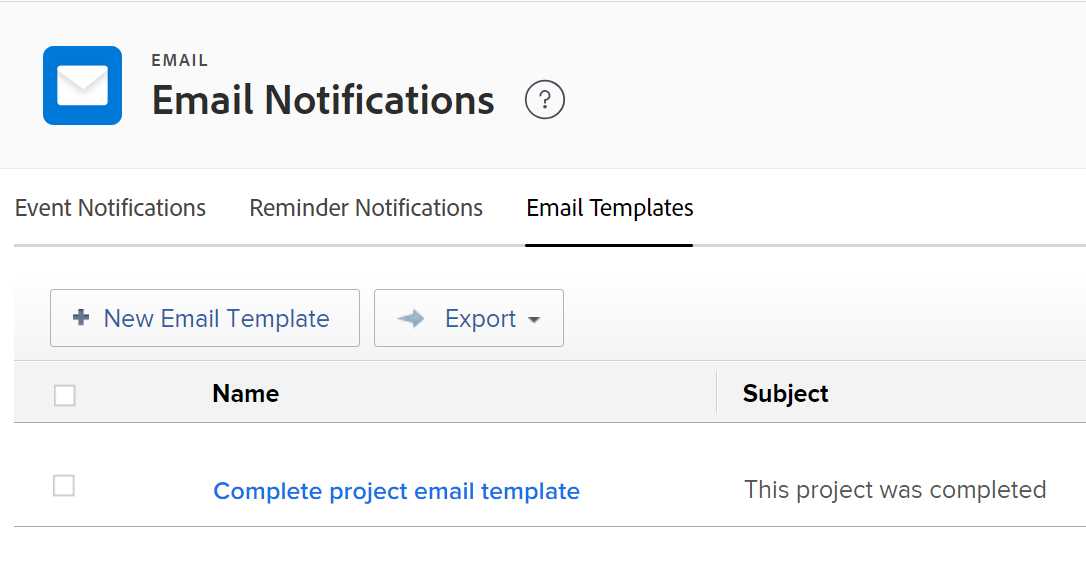
Adding a personal touch to payment reminders can significantly improve how recipients perceive and respond to them. By tailoring the message to each client, you can foster a sense of connection and attentiveness, making clients more likely to act promptly and maintain a positive view of your brand. Personalization can range from addressing the recipient by name to customizing details based on their unique transaction history.
Simple Ways to Personalize Messages
Personalizing each message doesn’t have to be complicated. Here are a few straightforward approaches that can make your communication feel more relevant and professional:
Personalization Feature Example Use the Client’s Name “Hello, John Doe, here is a summary of your account.” Structuring Emails for Easy Reading
Organizing your message effectively is essential to ensure that clients can quickly understand and act upon it. A clear structure improves readability and helps the recipient locate important information effortlessly. By breaking content into logical sections and using a clean layout, you make it easy for clients to follow along and focus on key details.
- Begin with a Brief Greeting: Start with a polite and direct greeting that sets a positive tone, making the message feel personal and approachable.
- Provide a Summary at the Top: Outline the most important information at the beginning. A short summary of the purpose of the message gives context and prepares clients for what follows.
- Use Short Paragraphs: Divide information into concise paragraphs, each covering a single topic. This approach prevents overwhelming the reader with dense text blocks.
- Include Key Details in a List:
Ensuring Clear Subject Lines in Notifications
The subject line is the first impression recipients have of your message. A clear and concise subject not only grabs attention but also sets the tone for the rest of the communication. By clearly stating the purpose, you increase the chances that the message will be opened and acted upon promptly.
Best Practices for Writing Subject Lines
To ensure your subject lines are effective, consider the following tips:
- Be Specific: Use a subject that directly relates to the purpose of the message, such as “Payment Due for Your Recent Purchase” or “Action Required: Account Balance Reminder.”
- Keep It Short: Limit your subject to 6–10 words. Long subject lines can be cut off in some inboxes, so it’s best to keep it brief and to the point.
- Avoid Spam Triggers: Steer clear of phrases that could make your message look like spam, such as “Urgent! Immediate Action Required” or “Exclusive Offer.” These can result in the message being ignored or filtered into junk folders.
Crafting Effective Subject Lines
When crafting your subject line, aim to make it both informative and actionable. For example, using phrases like “Due Soon” or “Please Review” helps convey urgency without being overly aggressive. The goal is to prompt the recipient to open the message and take the necessary steps.
Writing Effective Invoice Email Content
Crafting clear, professional, and informative content for payment reminders is essential for maintaining strong client relationships. A well-written message provides all the necessary details in a manner that’s easy to understand, encouraging the recipient to take swift action. The language should be concise, polite, and direct, leaving no room for confusion or misunderstanding.
Key Elements to Include in the Content
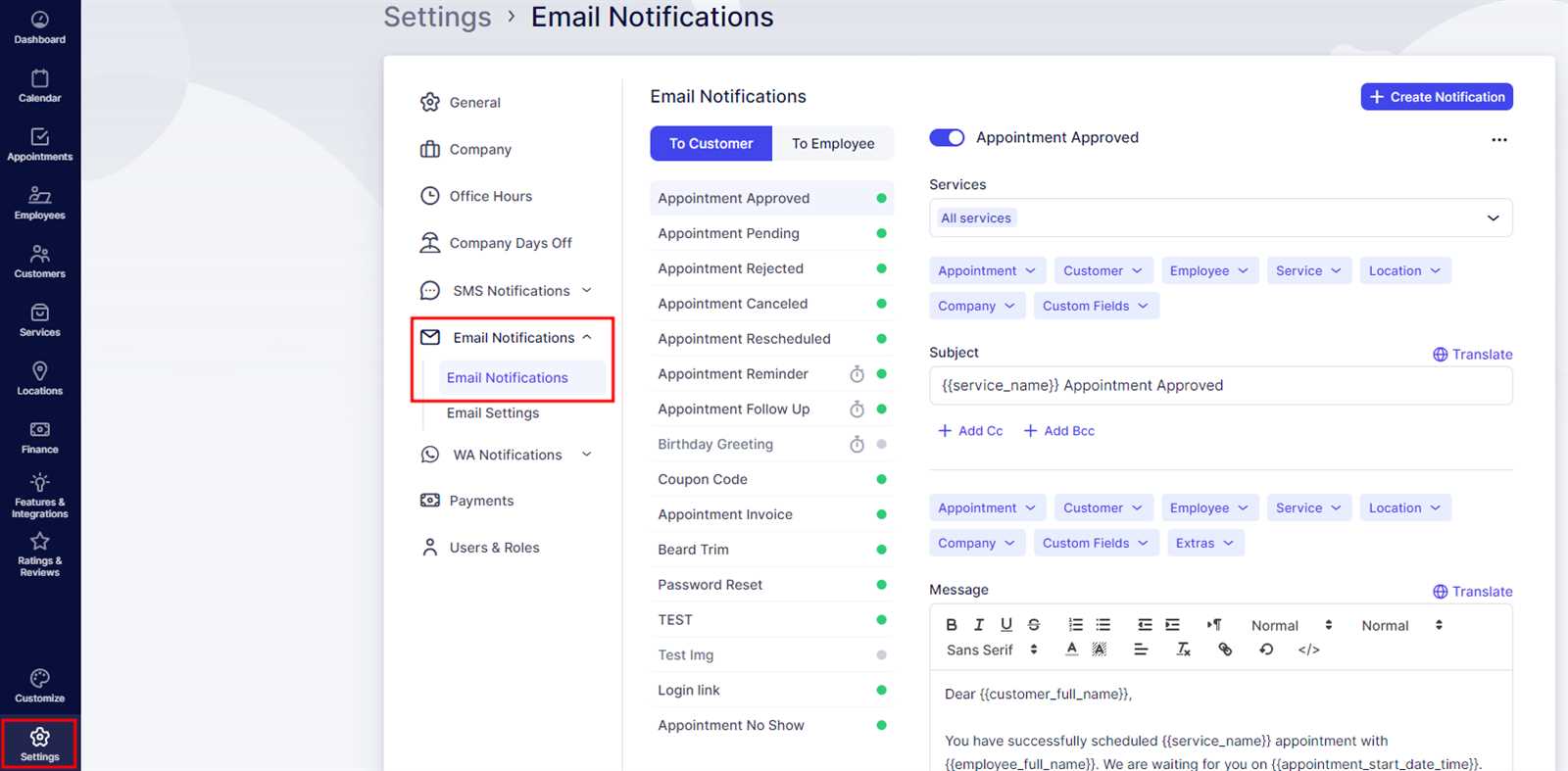
Effective communication requires including several important details in a structured format:
Element Description Clear Reference Include a reference to the relevant service or product so the recipient immediately understands what the message is regarding. Due Amount Be specific about the total due amount and ensure it’s easily identifiable in the text. Payment Instructions Provide clear instructions on how to proceed with the payment, including links or payment options. Deadline State the exact due date for payment to avoid any confusion about when the payment must be made. Contact Information Make sure your contact details are easily accessible for any inquiries or issues the recipient may have. Best Practices for Writing the Message
When drafting the content, be sure to use clear and professional language. Avoid unnecessary jargon or overly complicated sentences. Maintain a polite tone while also conveying a sense of urgency, without being aggressive. Ensure that all key details are included and placed in a logical order for easy readability.
Using Friendly Language for Client Relations
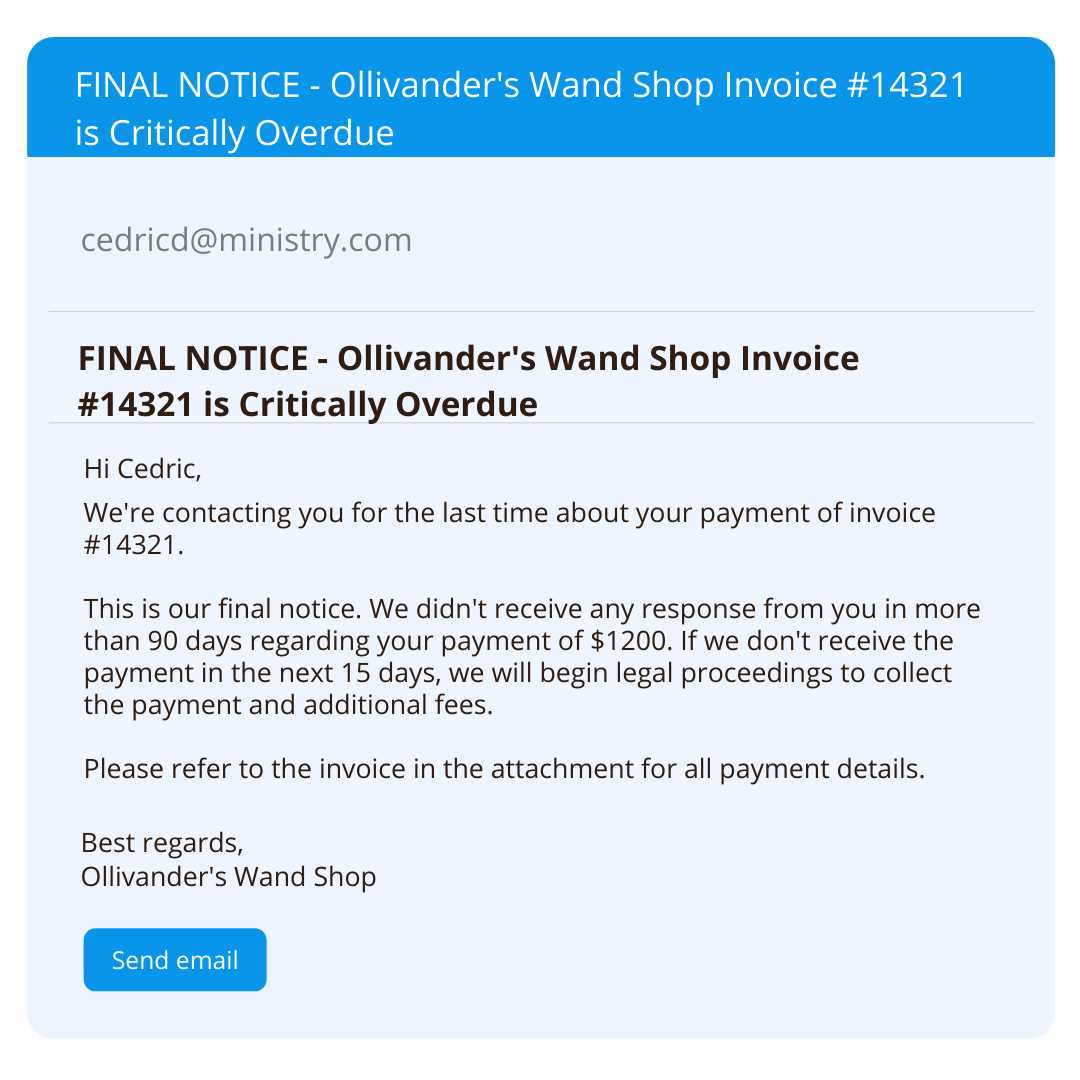
Maintaining a professional yet friendly tone in communication is essential for building strong, long-lasting relationships with clients. Using approachable language helps to establish trust, making clients feel valued and respected. The tone of your message should reflect this balance, making it clear that the interaction is both important and positive.
The Power of Polite and Warm Phrasing
Even when conveying essential information or reminding clients of due payments, it’s crucial to use language that is respectful and courteous. Phrases like “We hope you are doing well” or “Thank you for your continued partnership” can make the message feel less transactional and more personal.
Maintaining a Positive and Helpful Tone
Being helpful and solution-oriented in your messages enhances the relationship. Phrases like “If you have any questions or need assistance, please feel free to reach out” can help clients feel comfortable asking for support without feeling pressured or uncomfortable.
Automating Invoice Reminders Effectively
Automating payment reminders can save time and ensure timely action without requiring manual effort. By setting up automated systems, businesses can maintain a consistent communication flow while reducing the risk of missing follow-ups. However, it’s essential to implement these systems thoughtfully to maintain professionalism and client satisfaction.
Key Benefits of Automation
- Consistency – Reminders are sent on time, every time, without the risk of forgetting.
- Efficiency – Reduces manual tasks and allows employees to focus on more strategic responsibilities.
- Customization – Personalized reminders can be set up based on the client’s payment schedule and preferences.
- Scalability – As your business grows, automated reminders can handle a larger volume of clients without additional effort.
Best Practices for Setting Up Automated Reminders
- Set clear intervals – Schedule reminders well in advance to give clients ample time to make payments.
- Ensure personalization – Customize messages with client names and details to make the communication feel more personal.
- Use a polite tone – Even in automation, maintain a friendly and professional approach to foster positive relations.
- Provide easy payment links – Include direct payment links or clear instructions to simplify the process for clients.
Incorporating Brand Identity in Emails
Embedding your company’s brand identity into communications is essential for reinforcing recognition and trust. By ensuring consistency across all digital correspondence, you help recipients connect more closely with your business. The right tone, color scheme, and messaging style make a significant difference in how your brand is perceived and remembered.
Key Elements for Brand Consistency
- Logo Usage – Ensure your company logo is placed prominently to remind clients of your brand’s presence.
- Color Scheme – Utilize your brand’s colors for buttons, headings, and backgrounds to create a cohesive visual identity.
- Typography – Maintain consistency in font styles and sizes to reflect your brand’s tone, whether professional or casual.
- Messaging Style – Align the language with your company’s voice, whether formal, friendly, or creative, to convey the right atmosphere.
How to Integrate Your Brand in Correspondence
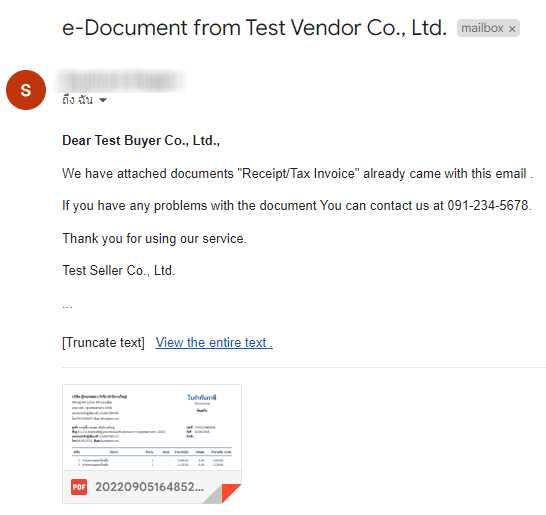
- Customize Headers and Footers – Include your logo and key contact information in headers and footers for easy access.
- Use Consistent Visual Elements – Make sure that buttons, links, and other visual elements reflect your brand’s style guide.
- Maintain a Unified Tone – Use language that reflects your company’s values and resonates with your target audience.
- Include Brand Storytelling – Integrate brief, engaging messages that highlight your brand’s mission and values.
Common Mistakes in Invoice Notifications
When crafting reminders or alerts related to payments, it is crucial to avoid certain pitfalls that can lead to confusion or dissatisfaction. Missteps in structure, tone, or content can reduce effectiveness and potentially harm client relationships. Understanding these errors and correcting them can help ensure your communications are clear and professional.
1. Lack of Clarity in Message
One of the most frequent issues is failing to clearly outline the purpose of the message. Ambiguous wording or insufficient details about the payment due can lead to confusion. It’s important to clearly specify the amount due, the due date, and any necessary instructions for action.
2. Overly Complex Language
Using complicated terms or jargon can make it difficult for the recipient to understand the message. A straightforward and simple language approach is often the best. Keeping sentences concise and avoiding unnecessary technical terms will make your message more accessible and efficient.
3. Ignoring Personalization
Generic and impersonal messages can come off as unprofessional. Personalizing the message by addressing the recipient by name and including specific details related to the transaction will create a more engaging and respectful interaction.
4. Failing to Use Clear Calls to Action
It is important to guide the recipient on what to do next. Without clear instructions or links to the payment portal, the recipient may be unsure how to proceed. A well-defined call to action (CTA) can help steer the recipient towards making the payment efficiently.
5. Missing Contact Information
Neglecting to include relevant contact details for any questions or issues can lead to frustration. Make sure to provide an easy way for the recipient to get in touch with your support team or accounts department.
6. Inconsistent Branding
Failure to maintain consistent branding in your correspondence can diminish the professionalism of the message. Ensure that all your communications reflect your company’s visual identity, including logos, colors, and tone, to reinforce your brand.
Improving Payment Response with Clear Instructions
Clear and direct instructions are essential when requesting payment. A well-structured message can significantly improve the chances of prompt action from the recipient. By eliminating ambiguity and providing step-by-step guidance, you can ensure that your recipients know exactly how to complete the transaction without hesitation.
1. Include Specific Payment Methods
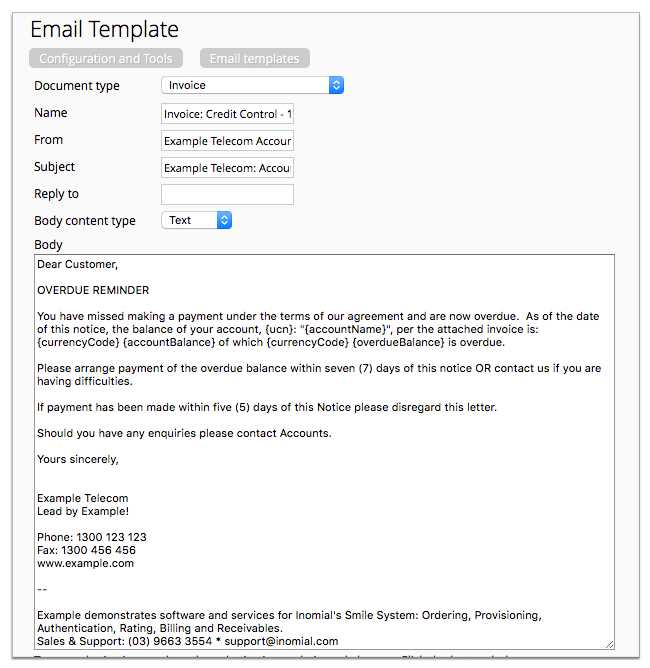
One of the first things to do is specify the available payment methods. Whether it’s an online portal, bank transfer, or other options, clearly stating the accepted forms of payment will prevent any confusion. Be sure to include any necessary account details or links to make the process as smooth as possible.
2. Step-by-Step Process
Break down the payment process into clear steps. Numbering the steps or using bullet points will help recipients follow the procedure with ease. Each step should be simple and direct, ensuring that even those unfamiliar with the process can understand what to do.
Example of Clear Payment Instructions:
- Step 1: Click the payment link provided or visit our payment portal at [URL].
- Step 2: Select your preferred payment method and enter your details.
- Step 3: Review the payment information and click “Confirm” to complete the transaction.
3. Highlight Important Information
Make sure to emphasize critical details such as the due date and payment amount. By highlighting this information, you draw attention to the most important aspects, helping recipients prioritize the payment accordingly.
Adding Security Tips for Online Payments
Ensuring the safety of online transactions is a top priority for both businesses and customers. Providing clear security guidelines can help build trust and protect sensitive financial information. By educating recipients on how to securely complete their payments, you reduce the risk of fraud and increase confidence in the payment process.
1. Use Secure Payment Gateways
Always recommend or offer secure payment options that encrypt sensitive data. Secure payment gateways ensure that customer information is handled safely, minimizing the risk of unauthorized access. Make sure to mention that your platform uses trusted and encrypted methods for processing payments.
2. Avoid Public Wi-Fi for Transactions
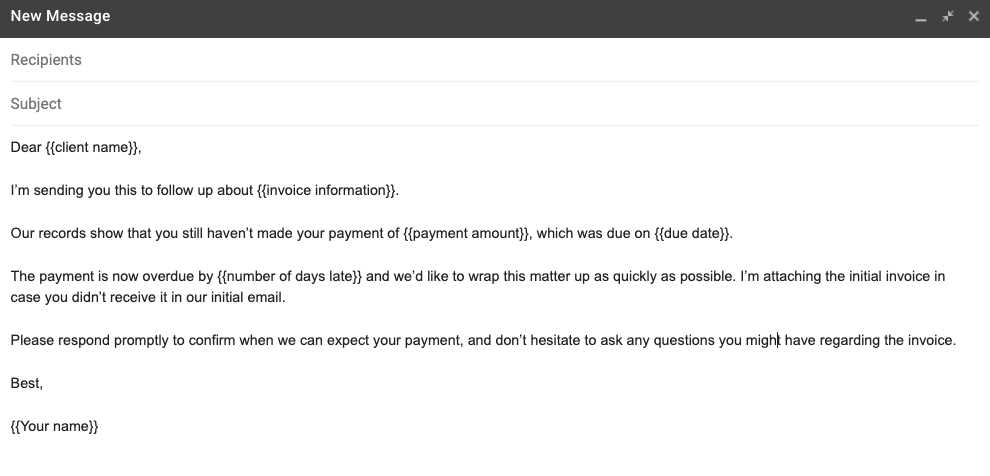
Warn users against making payments over public Wi-Fi networks. These networks are often vulnerable to security breaches. Encourage recipients to complete transactions only over secure, private connections, such as personal mobile data or a trusted home network.
3. Enable Two-Factor Authentication (2FA)
If possible, recommend or implement two-factor authentication (2FA) for added security. This extra layer of protection requires users to verify their identity through a second step, typically a code sent to their mobile device or email, before completing the transaction.
4. Look for Secure Website Indicators
Advise recipients to ensure that the payment website is secure. Customers should check for indicators such as:
- A URL starting with https://, where the “s” stands for secure.
- A padlock symbol next to the website address in the browser bar.
5. Regularly Update Passwords
Remind users to regularly update their passwords and use strong, unique combinations. Strong passwords typically include a mix of letters, numbers, and symbols. This helps protect their accounts from potential breaches.
Designing Mobile-Friendly Invoice Emails
In today’s digital world, many recipients access important messages through their smartphones. Designing communications that are optimized for mobile devices ensures that key information is easily accessible, regardless of screen size. A mobile-friendly design helps improve the user experience and ensures that recipients can view and act on your message without frustration.
1. Keep It Simple and Clear
On smaller screens, simplicity is key. Avoid cluttering the message with too much information. Focus on the most essential details, such as payment amounts and due dates, and present them in a clear and concise manner. Use short paragraphs and bullet points to make the content easy to skim.
2. Use Responsive Layouts
A responsive layout adapts to the size of the recipient’s screen, ensuring that the content is displayed properly. Design your layout using flexible grids and scalable images so that the content adjusts seamlessly when viewed on mobile devices. This avoids horizontal scrolling, which can be frustrating for users.
3. Optimize Fonts for Readability
On mobile devices, font size and readability are crucial. Use larger fonts for headings and key details, ensuring they are easy to read without zooming in. Make sure the body text is sufficiently sized as well, typically no smaller than 14px, to enhance legibility on smaller screens.
4. Prioritize Important Information
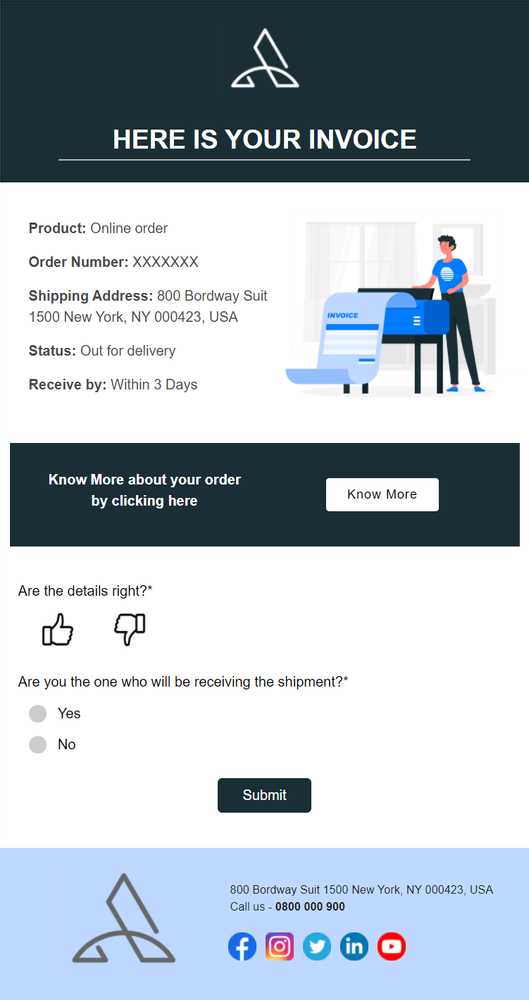
Since mobile screens have limited space, it is important to place the most relevant information at the top of the message. The payment amount, due date, and a clear call to action should be the focal points of your communication. Ensure that these elements are immediately visible without the need for excessive scrolling.
5. Test Across Devices
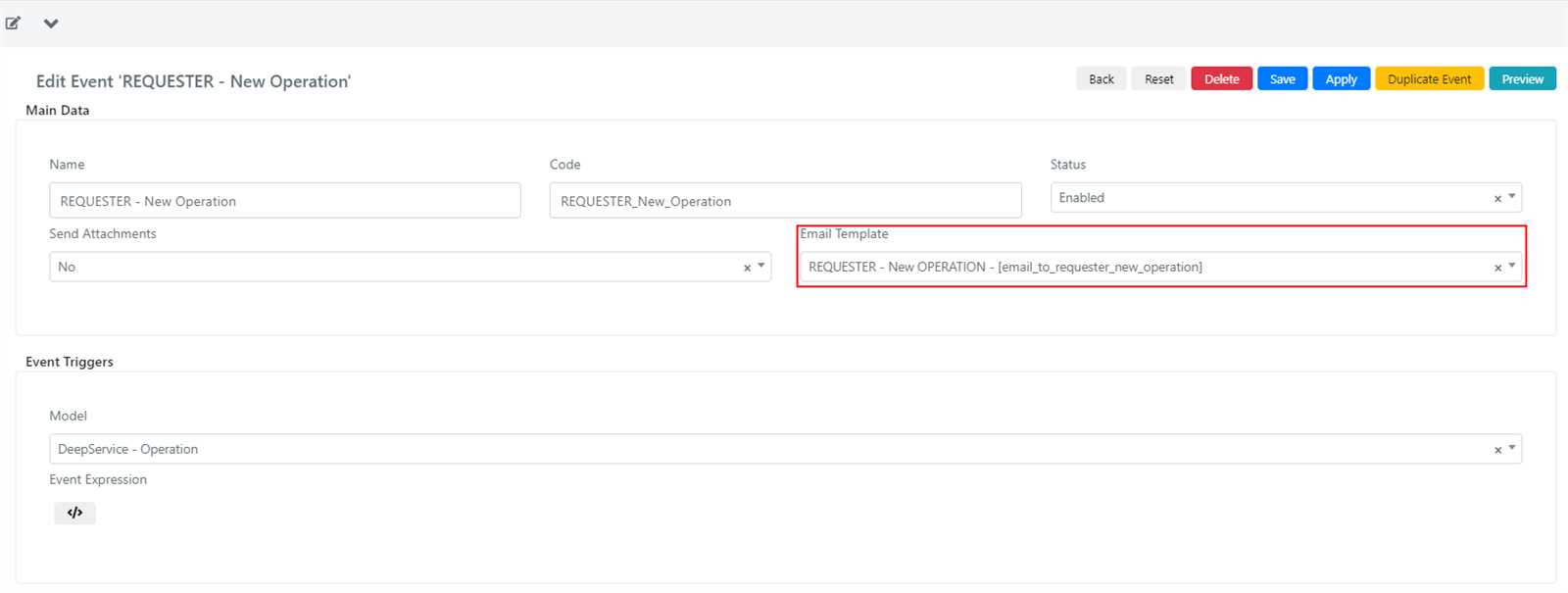
Before sending out your message, test it on various mobile devices to ensure that it appears correctly on all screen sizes. This will help you identify and correct any layout issues, such as text that might appear too small or images that don’t scale properly.
Testing Email Templates Before Sending
Before sending any important communication to recipients, it is essential to thoroughly test the message for both functionality and appearance. Testing ensures that the content displays correctly, all links work as expected, and the overall user experience is flawless. It also helps identify and resolve any potential issues, reducing the risk of miscommunication or technical problems.
1. Check Compatibility Across Different Platforms
Different devices and platforms can render content in unique ways. It is important to test your message on various devices and email clients to ensure consistent presentation. Consider testing on:
- Desktop computers (using various browsers)
- Mobile devices (smartphones and tablets)
- Email clients (e.g., Gmail, Outlook, Apple Mail)
2. Verify Functionality of Links and Buttons
Ensure that all hyperlinks, buttons, and calls to action are working as intended. Test each link to verify that it redirects to the correct page or form. For buttons, check if the links are responsive and easy to click, especially on mobile devices.
3. Review Layout and Design
Check the layout to confirm that it adapts correctly across different screen sizes. Verify that images are not distorted, text is legible, and the overall design looks professional. Pay special attention to:
- Spacing and alignment
- Mobile responsiveness
- Font sizes and colors
4. Test for Personalization
If you are using dynamic fields or personalized content, ensure that the data is being pulled correctly. For example, check if the recipient’s name or unique details are being displayed correctly in the message body.
5. Conduct a Spam Test
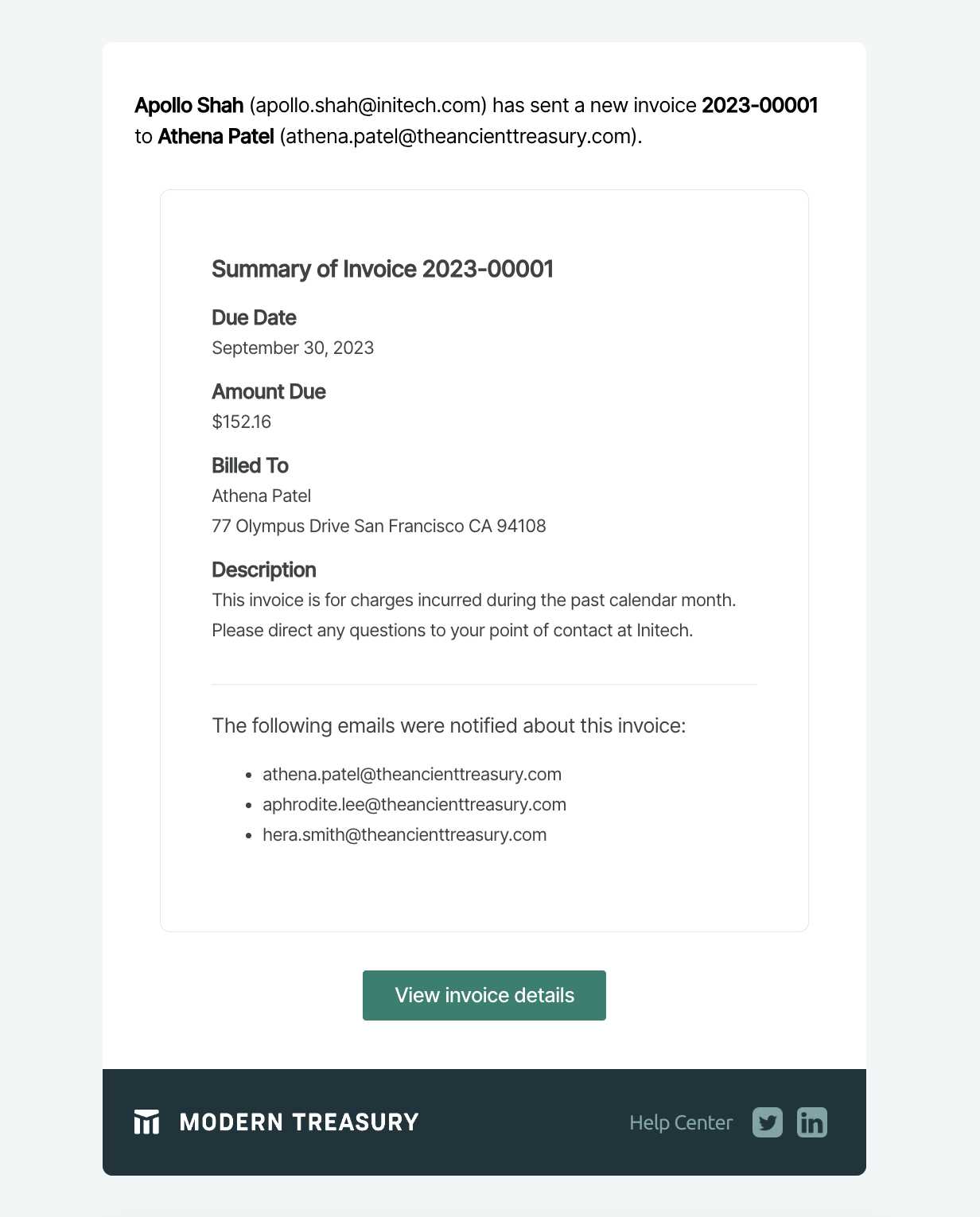
To avoid your message being marked as spam, check for any elements that might trigger spam filters. Review the subject line, content, and any attached files to ensure compliance with best practices for deliverability.